Mooncakes, also known as moon cakes, are an iconic delicacy of the Mid-Autumn Festival (Moon Festival) in China. According to legend, they played a role in the 14th century rebellion against the Mongols: secret messages were hidden inside and distributed to coordinate the uprising.
Today, mooncakes are filled with red bean paste, lotus paste, taro paste, or other sweet fillings, all wrapped in a thin crust. They’re often decorated with intricate patterns and may contain a salted egg yolk to symbolize the moon. You can also find a simplified version made with mung bean paste—see the recipe for mung bean mooncakes.
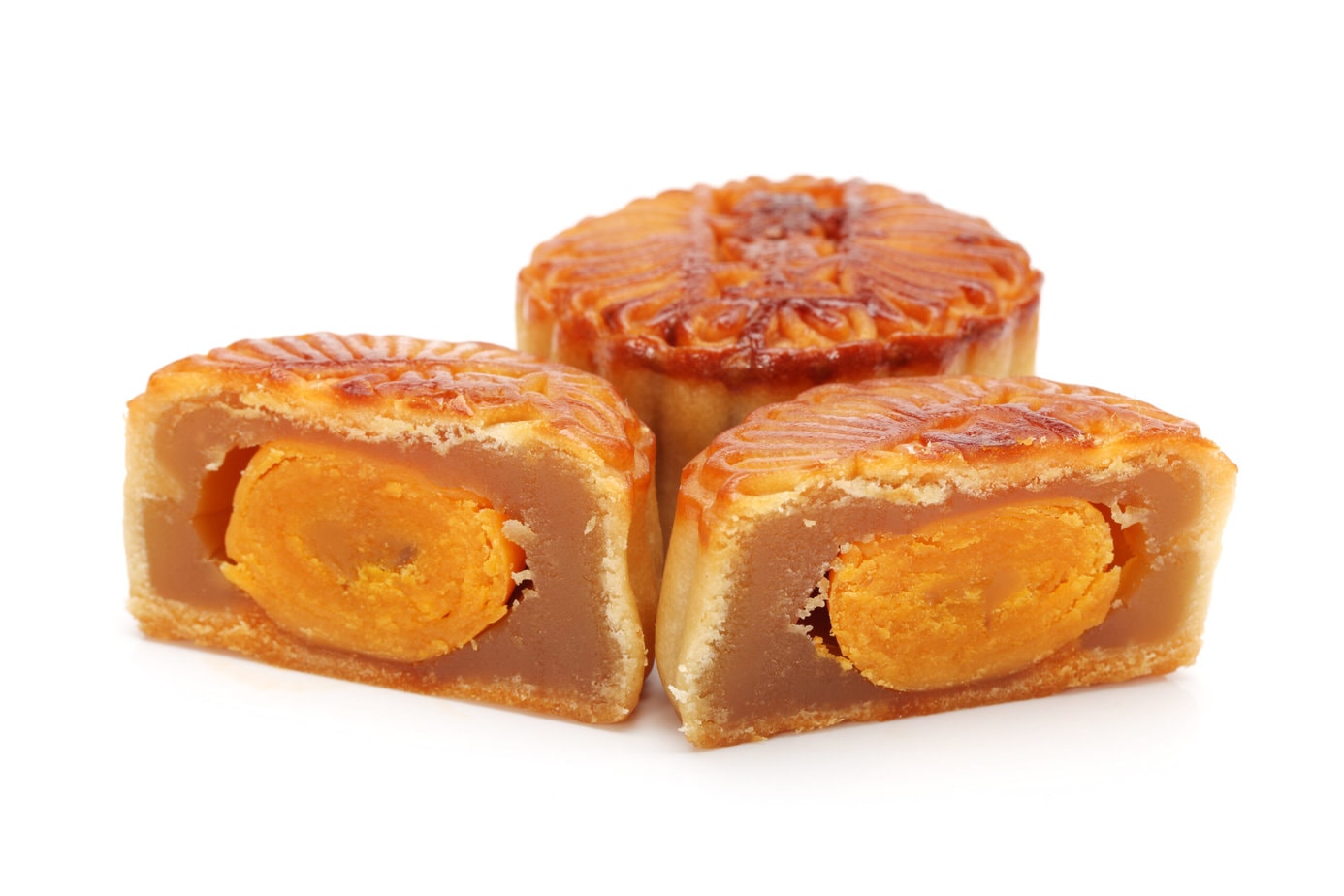
An iconic treat of the Chinese Mid-Autumn Festival
The 2023 Moon Festival falls on September 29, which corresponds to the 15th day of the 8th month of the Chinese lunar calendar.
This festival celebrates the harvest and family reunions. People gather to admire the moon, which is said to be at its roundest and brightest at this time of year. Evening activities often include exchanging mooncakes, sipping tea, and gazing at the moon.
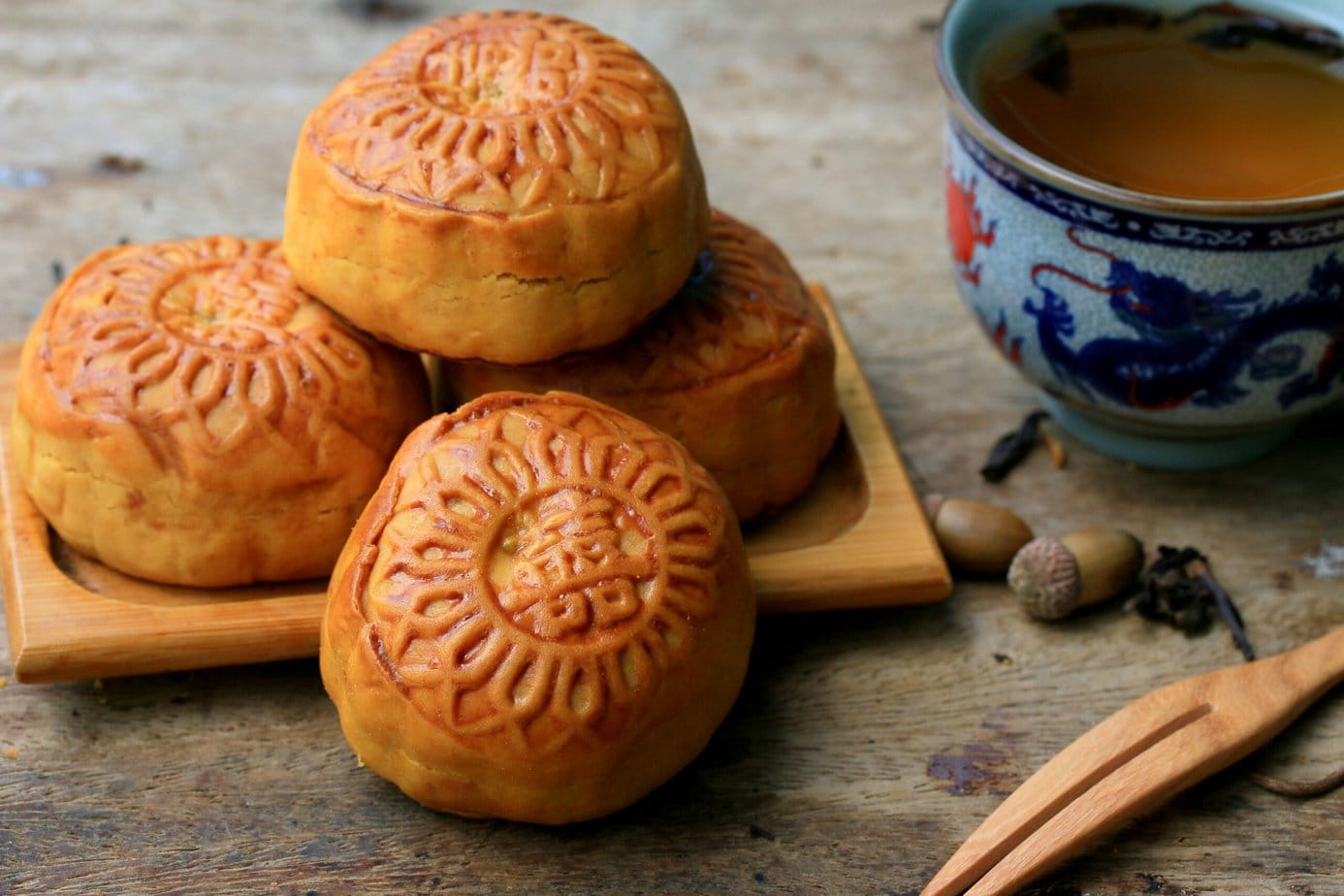
It’s an opportunity for family and friends to gather and share joyful moments, while honoring ancestral traditions.
Key ingredients for mooncakes
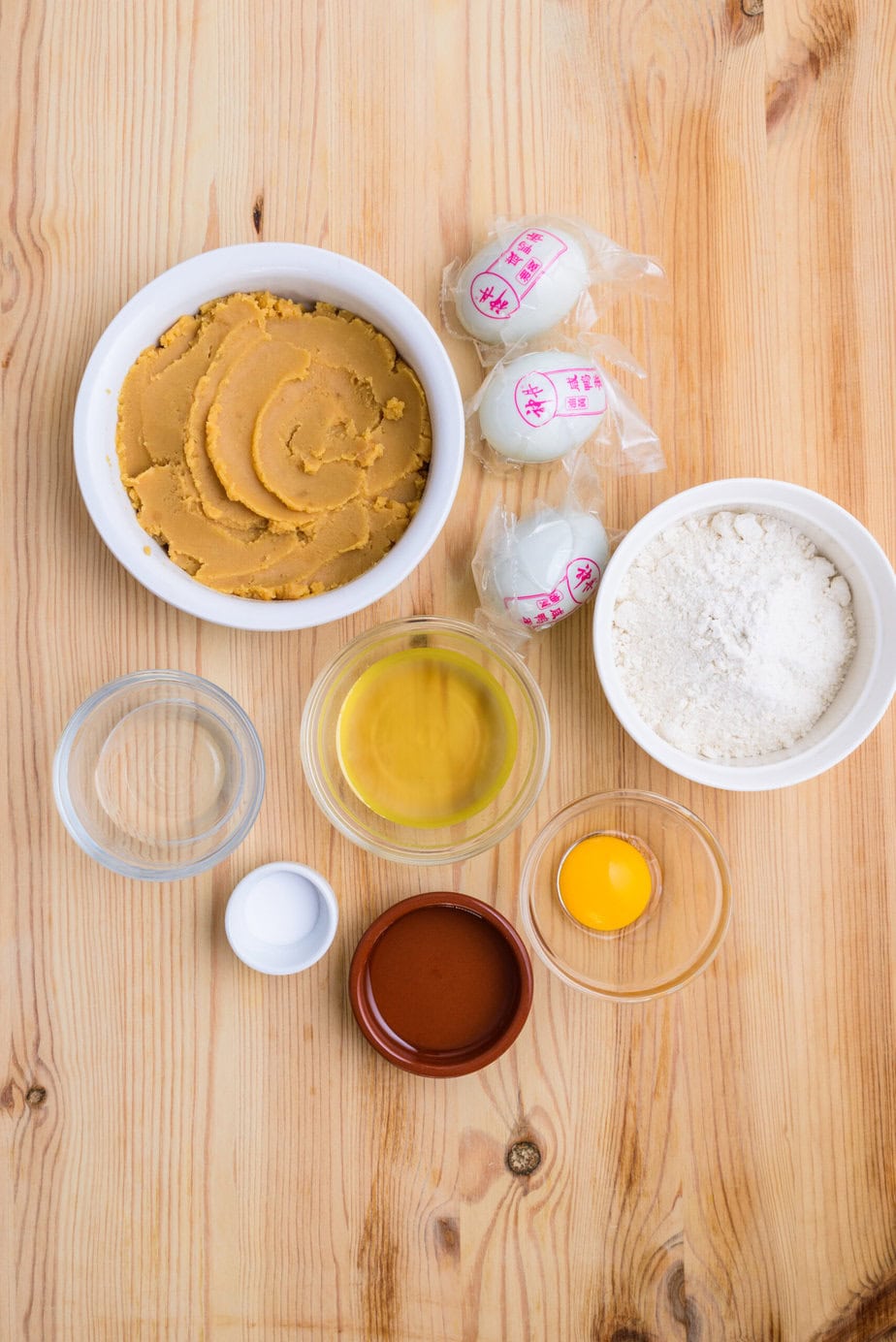
Corn syrup or “golden syrup”: this is glucose syrup; it helps give the dough its texture. If needed, substitute honey.
Alkaline water: also called “kansui,” it lends a subtle flavor and a distinctive color to the pastry. Don’t worry, it’s easy to make at home!
Taro or lotus paste: you can fill the mooncakes with whatever you like, but traditionally lotus seed paste and taro paste are the most common. Note: if you buy ready-made paste (taro/lotus/red bean/sesame), it may be too runny; heat it in a saucepan, stirring constantly, until it thickens to a firm, dough-like consistency.
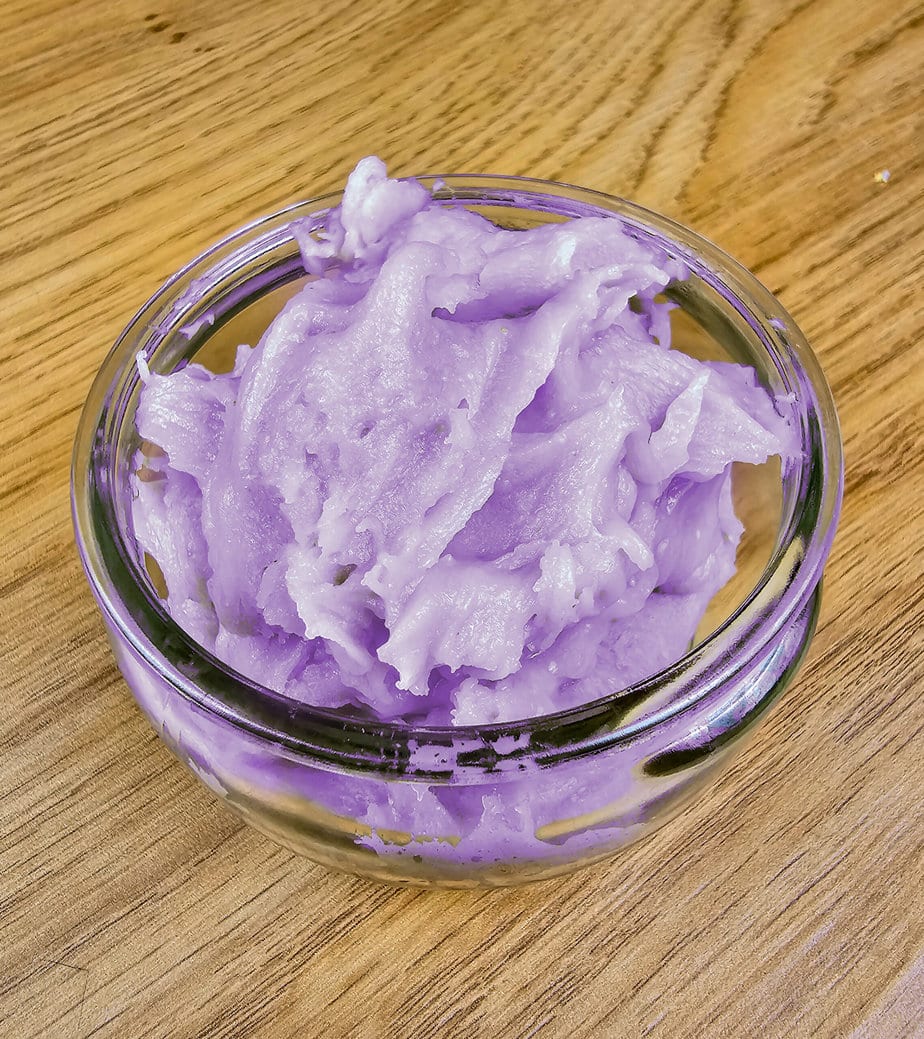
In short, making mooncakes isn’t especially difficult—it’s mostly about following the steps. Fillings are endlessly variable; I recently tried white lotus, pandan, and caramelized coconut. Absolutely delightful.
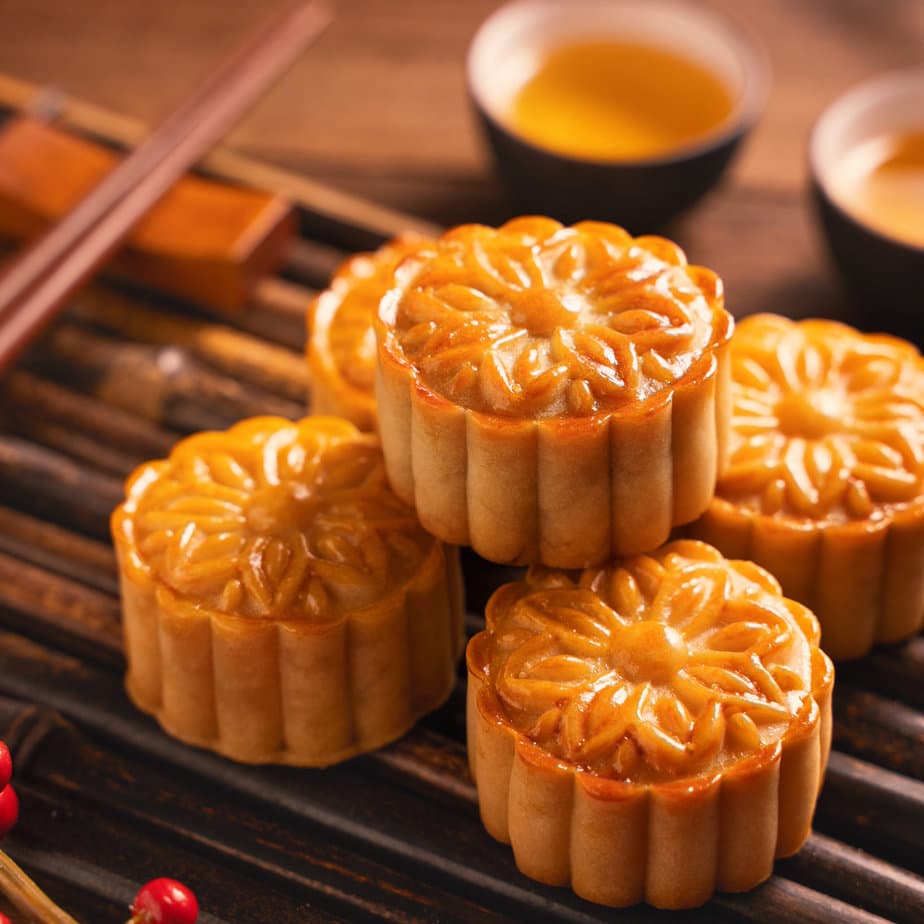
Equipment
Ingredients
Dough
- 60 g corn syrup
- 0.25 teaspoon alkaline water
- 24 g vegetable oil
- 100 g wheat flour
Filling
- 220 g lotus paste or other filling such as taro paste
- salted eggs optional
Egg Wash
- Egg yolk, for brushing
Alkaline Water
- 5 g baking soda
- 20 g water
Instructions
Make the alkaline water
- Stir the baking soda into the water.5 g baking soda, 20 g water
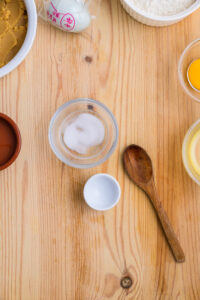
Make the dough
- In a bowl, gently mix the syrup, alkaline water, and vegetable oil.60 g corn syrup, 0.25 teaspoon alkaline water, 24 g vegetable oil
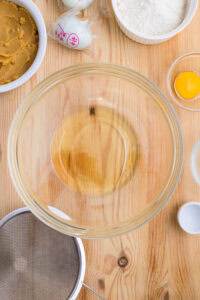
- Sift the flour and add it to the bowl all at once.100 g wheat flour
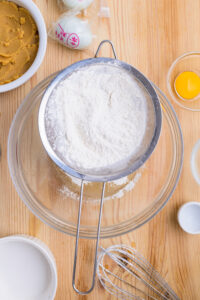
- Mix until just combined.
- Wrap the dough in plastic wrap and chill for 30 minutes.
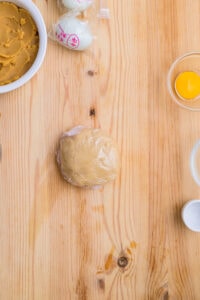
Prepare the filling
- Divide the taro or lotus paste into equal portions.220 g lotus paste
- Roll each portion into a ball and set aside.
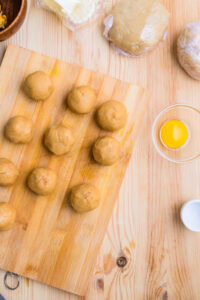
- If using salted eggs, gently press a salted egg yolk into a paste ball, then wrap it carefully and evenly so there’s no gap between the paste and the yolk. Aim for an even layer of lotus paste around the yolk to keep it centered in the mooncake.salted eggs
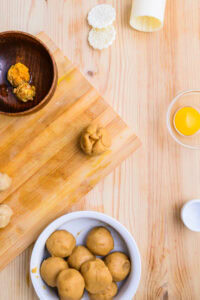
Assembly
- Divide the dough into equal portions.
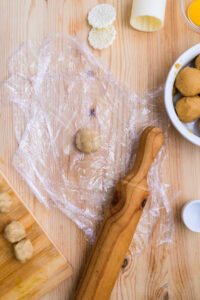
- Flatten the dough between two sheets of plastic or plastic wrap.
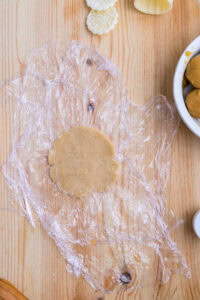
- Remove the top layer of plastic wrap.
- Place a ball of filling in the center.
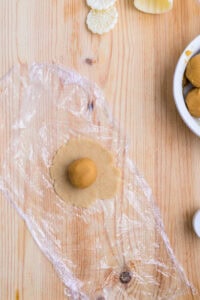
- Fold the dough up and over the filling.
- Trim any excess dough where it overlaps to ensure an even thickness.
- Roll the mooncake between your palms to form a smooth ball.
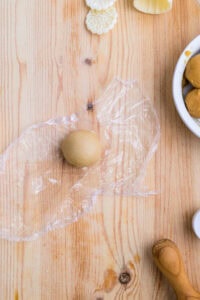
Baking
- Roll the mooncake on a lightly floured surface.
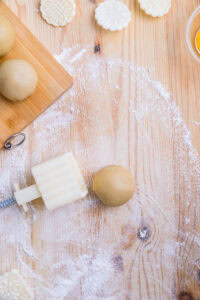
- Dip the mold plunger in flour, then tap off the excess.
- Place the dough on the baking sheet.
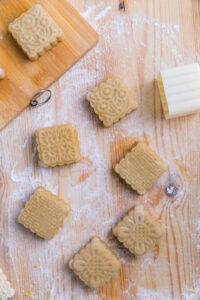
- Place the mooncake mold over the dough and press the plunger down.
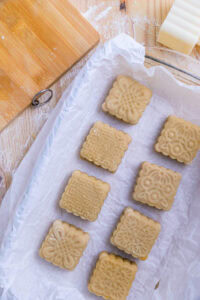
- Bake at 175°C on the middle rack for 5 minutes, or until the surface starts to set.
- Remove the mooncake from the oven and brush the surface with egg yolk.Egg yolk, for brushing
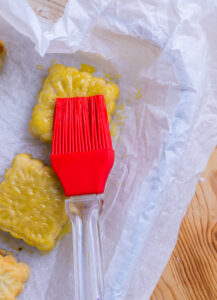
- Bake for another 10 minutes, or until golden.
- Remove the mooncake from the oven and let cool to room temperature.
- Transfer the mooncake to an airtight container and store for 3 days.

